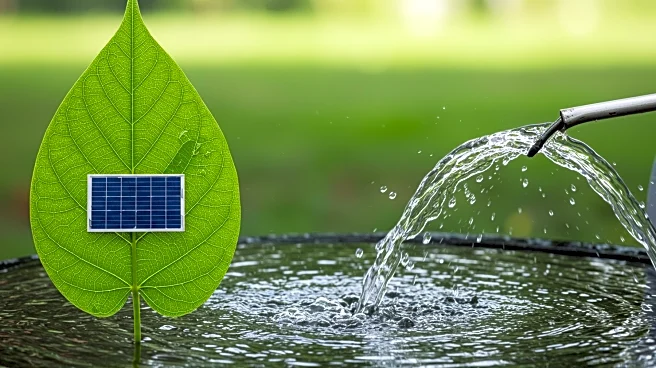What's Happening?
Researchers Jia Zhu and Ning Xu have developed a solar-driven method for ammonia recovery from wastewater, as reported in Nature Sustainability. This innovative approach utilizes MXene-based sponges, which are coated with Ti3C2 MXene and functionalized with amino groups. The sponges create a localized alkaline environment, facilitating the conversion of ammonium to ammonia without external energy input or added reagents. The design features a Janus structure with hydrophobic and hydrophilic layers, enhancing operational stability and efficiency. This method addresses environmental pollution and resource waste by recovering valuable ammonia from wastewater, promoting sustainable practices in chemical recovery.
Why It's Important?
The solar-driven ammonia recovery method offers a sustainable solution to environmental pollution and resource waste associated with ammonium-containing wastewater. By eliminating the need for external energy and chemicals, this approach reduces the environmental impact of wastewater treatment processes. The use of MXene-based sponges highlights advancements in material science, offering potential applications in other areas of resource recovery and environmental management. This innovation aligns with global efforts to enhance sustainability in industrial processes, potentially influencing policy and practices in wastewater treatment and chemical recovery.












